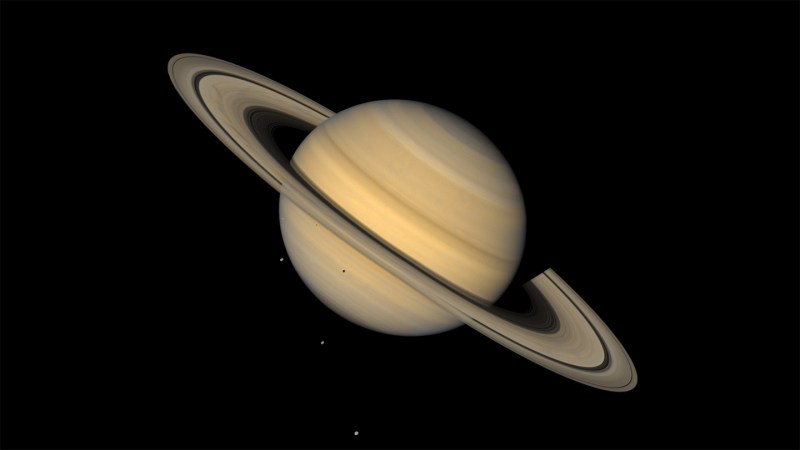
Astronomers have finally found an asteroid that keeps pace with Saturn in its orbit around the sun. Such objects, called Trojan asteroids, are already known for the other three giant planets.
“Saturn was kind of the odd man out, if I can call it that, because even though it’s the second most massive planet in the solar system, it didn’t have any Trojans,” says Paul Wiegert, an astronomer at the University of Western Ontario in London, Canada. Like Saturn, the new asteroid takes about 30 years to orbit, but lies 60 degrees ahead of the planet in its orbit, Wiegert and colleagues report in work submitted Sept. 29 to arXiv.org.
Most of the asteroids in the solar system orbit the sun between the paths of Mars and Jupiter. However, in 1906, German astronomer Max Wolf discovered the first Trojan, which he named Achilles, orbiting the sun 60 degrees ahead of Jupiter. Since then, astronomers have found thousands of additional Trojan asteroids – some are 60 degrees ahead of Jupiter, others are 60 degrees behind. NASA’s Lucy spacecraft will visit eight of them between 2027 and 2033 (SN: 15.10.21).
Trojan asteroids also exist for Uranus and Neptune and even for Earth and Mars (SN: 2/1/22).
After a telescope image in Hawaii captured the new asteroid in 2019, an amateur astronomer in Australia, Andrew Walker, suggested the object could be a Saturnian Trojan – if it had the right orbit around the sun.
“The key to getting a good orbit for something in our solar system is to have many observations of it through different telescopes over a long period of time,” says Wiegert. So astronomer Man-To Hui at the Macau University of Science and Technology in China looked for previous images of the asteroid and also planned new observations. Measurements of the asteroid’s position – from 2015 to 2024 – confirmed its Trojan nature. Named 2019 UO14the asteroid is only about 13 kilometers across, the same size as Deimos, the smaller of Mars’ two moons.
Scientists have long predicted Saturnian Trojans, says astronomer Carlos de la Fuente Marcos of the Complutense University of Madrid, who was not involved in the discovery. But all Saturnian Trojans must have unstable orbits because Saturn has giant planets on either side of it.
“Jupiter seems to be the culprit,” says de la Fuente Marcos. Jupiter’s great gravity gradually pulls a Saturnian Trojan, making its orbit around the sun increasingly elliptical. The asteroid then wanders so close to Jupiter or Uranus that one of those giant planets knocks the tiny body out of its Trojan orbit.
In fact, researchers estimate that the asteroid has been a Trojan for only about 2,000 years and will remain so for only another 1,000 years. Before its connection with the ringed planet, the asteroid was probably a centaur, an asteroid that moved around the sun between the orbits of the giant planets (SN: 11/12/77).
The asteroid may not be Saturn’s only Trojan. “I’m pretty sure there are more — maybe just a few, but this can’t be the only one,” Wiegert says.
#Saturns #Trojan #asteroid #finally #discovered
Image Source : www.sciencenews.org